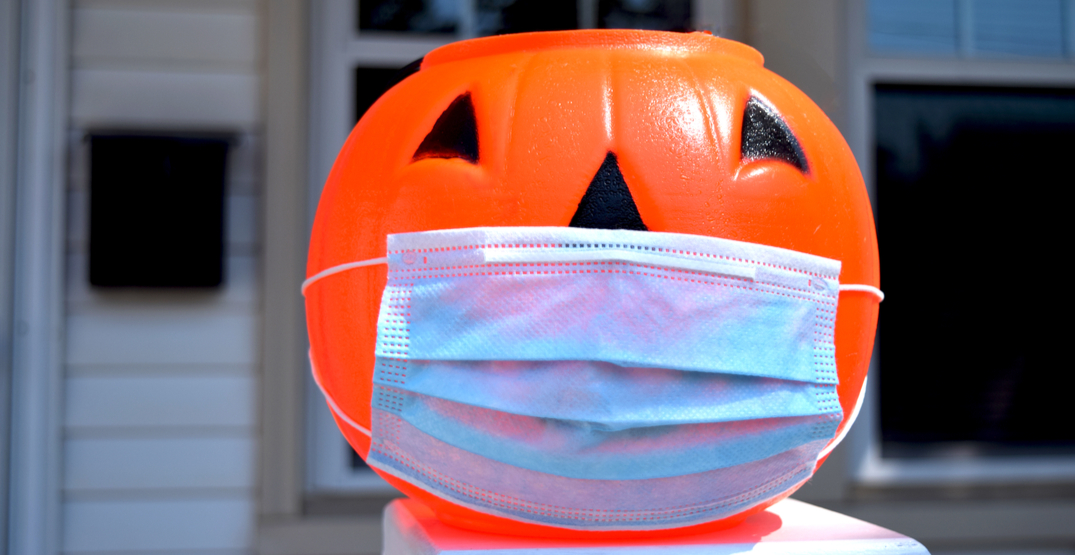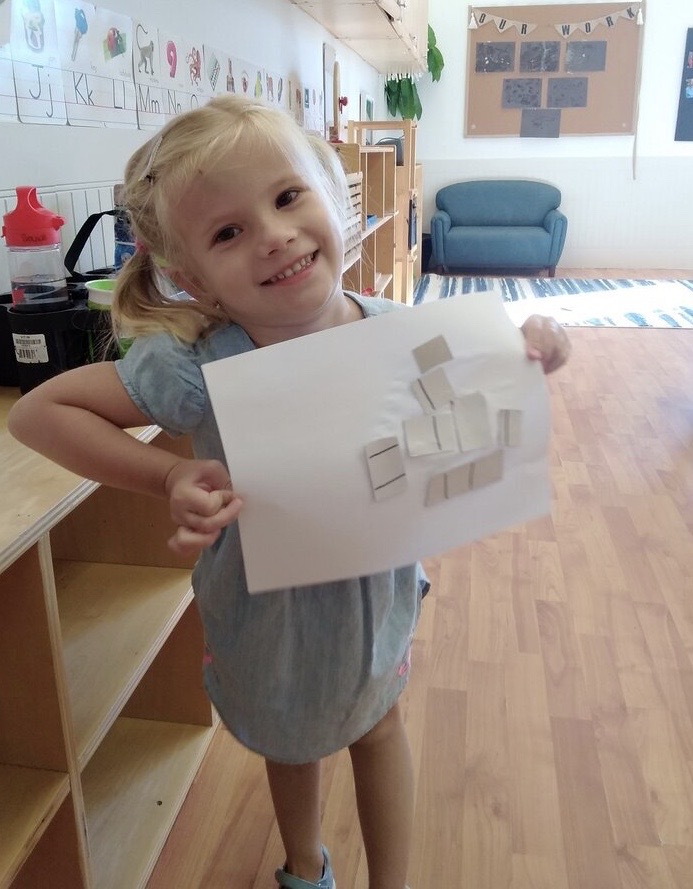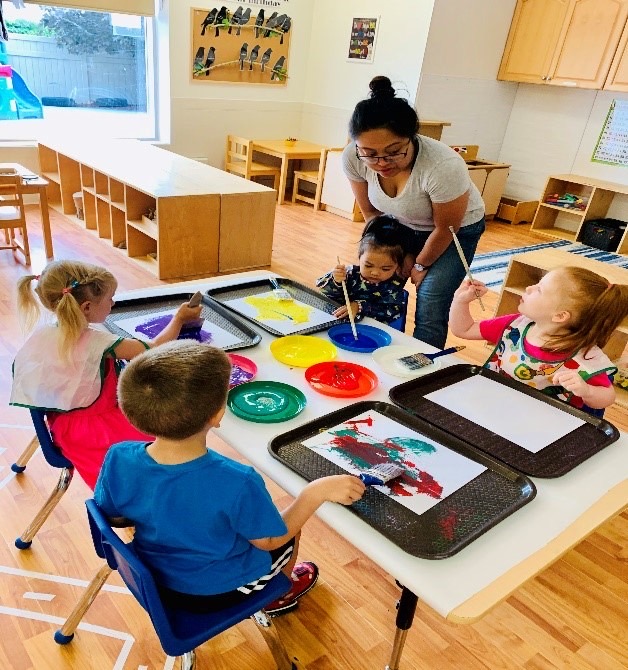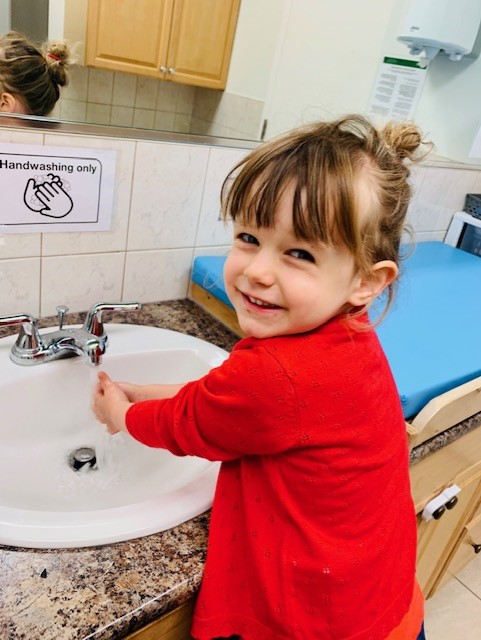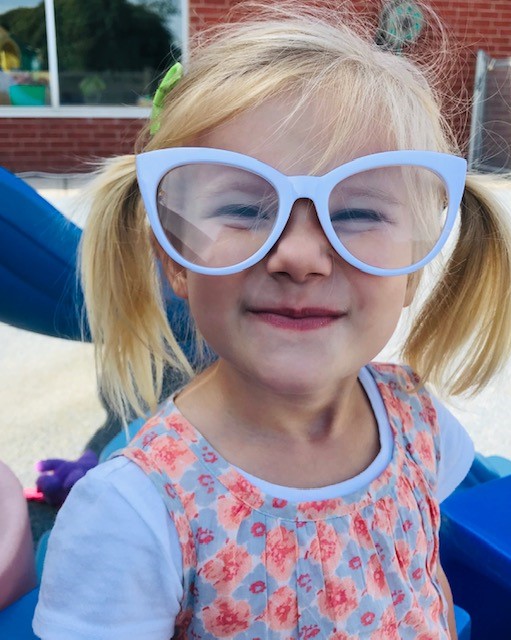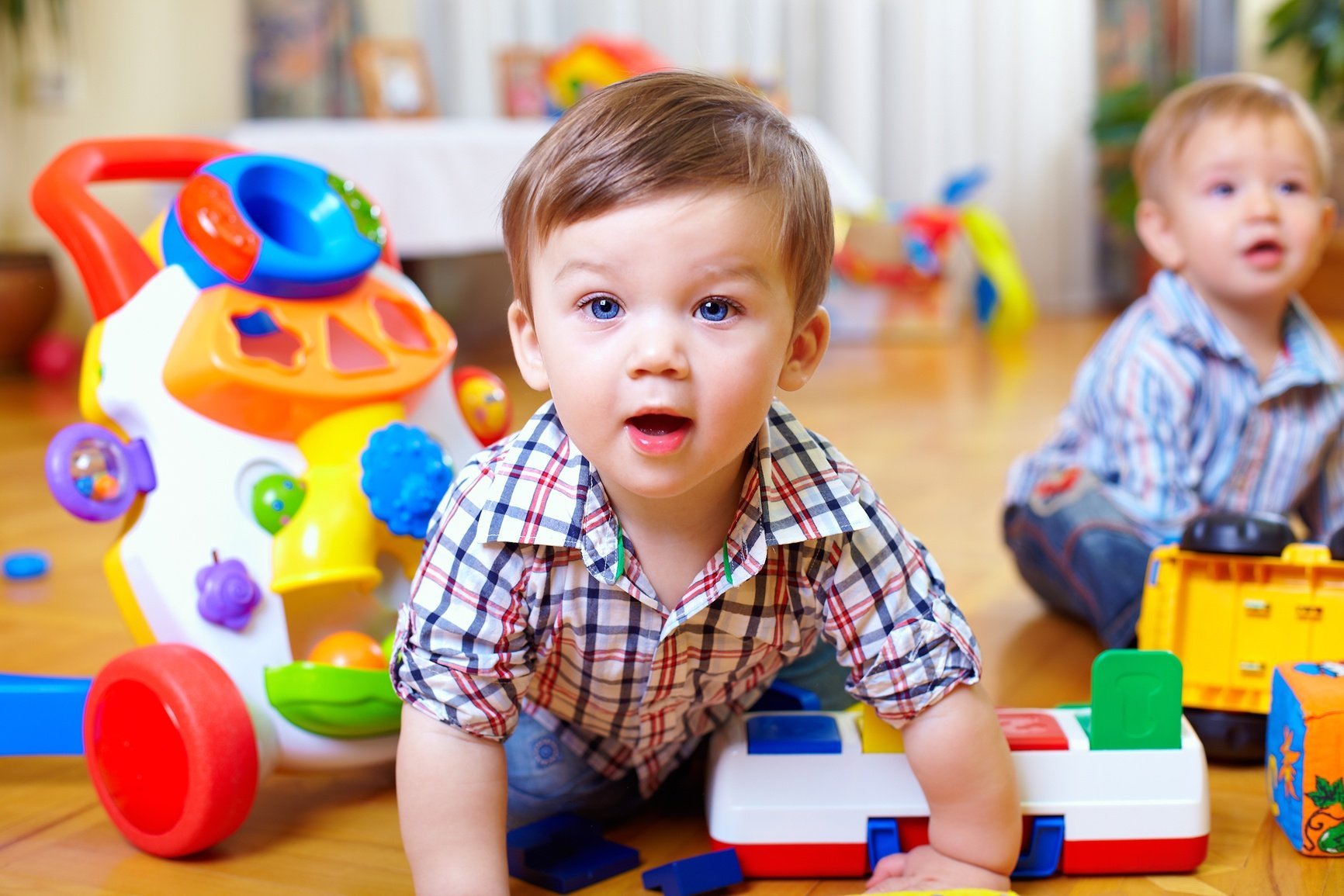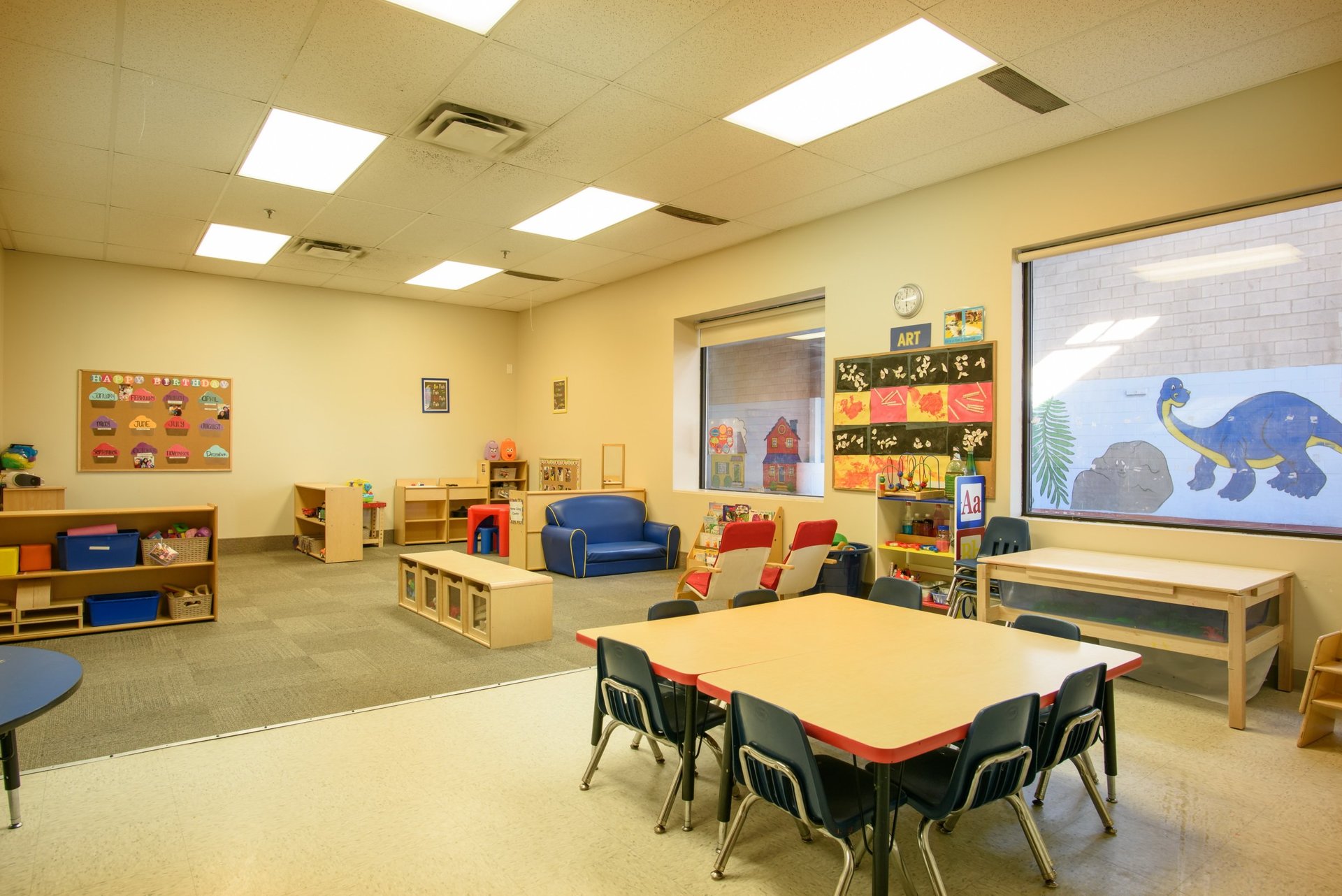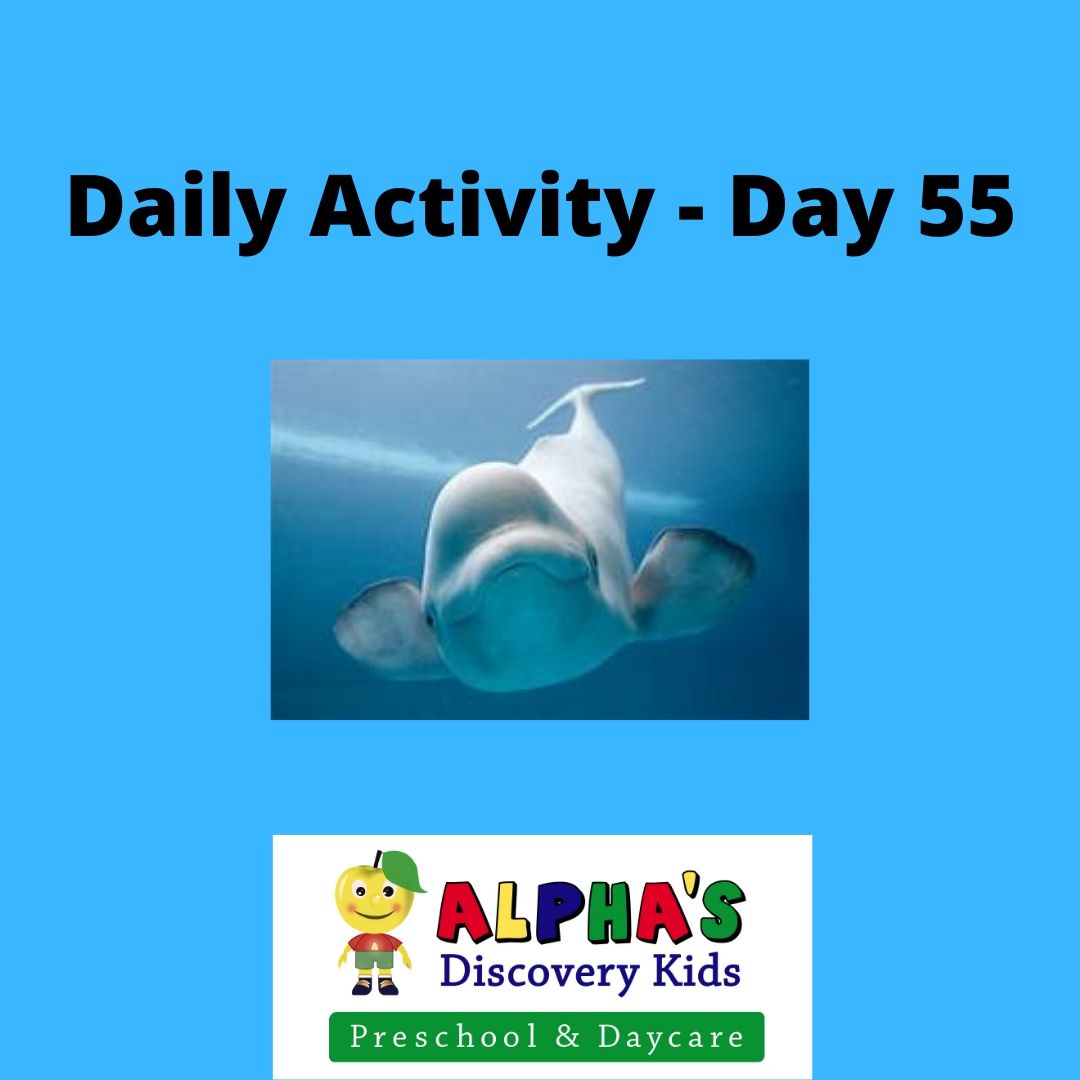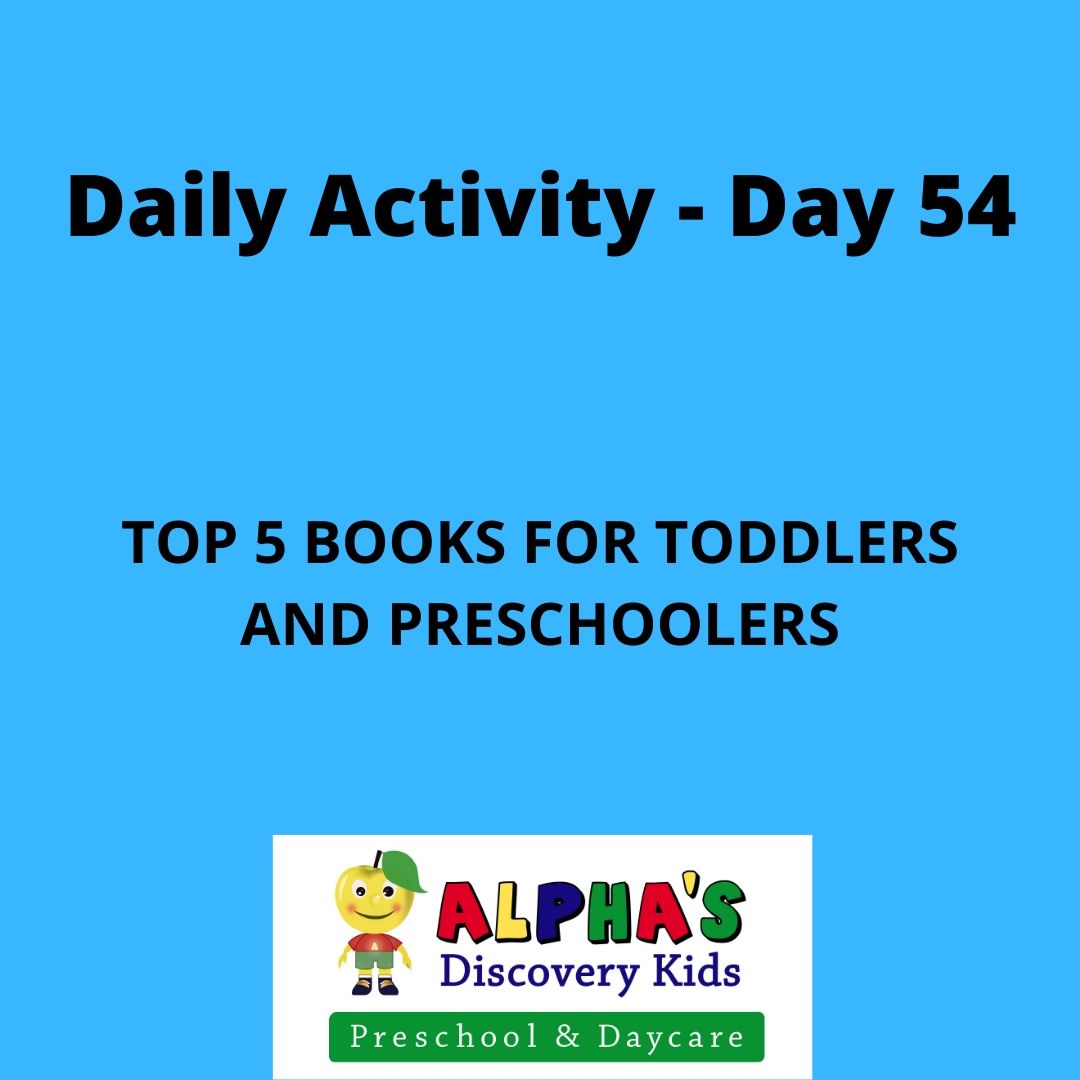Halloween 2020 – The spookiest one yet! TO TRICK-OR-TREAT OR NOT?
Halloween 2020 -The Spookiest one yet! TO TRICK-OR-TREAT OR NOT TO TRICK-OR-TREAT?
Holidays help us maintain our sense of rituals and ‘normalcy’ during a not-so normal time, but since March 2020, we have had to find new ways to celebrate holidays, traditions and spec ial occasions. Will blowing out birthday candles or bobbing for apples become a thing of the past? What about trick-or-treating?
As we approach Halloween 2020, there are diverse views on whether trick-or-treating should happen this year. Some argue that cancelling the holiday would be a major economic disruption to a billion-dollar industry in a time when the economy has suffered due to COVID-19. While others ascertain that there are serious risks to health and safety involved in the activity of trick-or-treating that could lead us toward another shut down. Whether you agree with those that want to cancel or not, why not make the best of Halloween 2020 with the spookiest Halloween yet! We will share some fun Halloween ideas for both those that want to trick-or-treat and those that don’t.
For those that want to trick-or-treat, here’s some ideas to enjoy it in a safer way:
- Have children wear masks and gloves and make it a part of their costume.
- Leave baskets of candy on a table in the driveway so kids don’t need to come to the door or ring your doorbell.
- Create individual bags of candy that are easy to hand out. Ensure all candies are have a wrapper.
- Avoid gathering in large groups for trick or treating. Instead, keep the group to 2-4 kids.
- Create a fun atmosphere by decorating the outside of your home.
- If you are still not comfortable going out to a stranger’s home, you can trick-or-treat by going to family or friends’ homes only.
For those that want to explore other Halloween activities:
- Pumpkin carving/decorating contest – involve the whole family to see who can make the scariest/funniest pumpkin.
- Make Halloween play dough. Check our Facebook page for a great pumpkin spice play dough recipe.
- Go on a Halloween candy scavenger hunt! Click on this link to print one. https://heyletsmakestuff.com/printable-halloween-candy-scavenger-hunt/
- Decorate spooky cupcakes with Halloween candy.
- Have a Halloween dance party in your own home.
- Make a Halloween obstacle course. Here’s a link for a great spider lair obstacle course. https://www.chickenbabies.com/2011/10/lair-of-spider-queen.html
- Make a magic potion. Mix ingredients and learn some science too!
- Pumpkin-theme activities. Stay tuned for our next blog with lots of pumpkin-themed activities and ideas.
- Halloween Games – Stay tuned to future blogs this month with more Halloween games and activities.
As you can see, there are lots of ways to make 2020 an amazing Halloween – even if you are not trick-or-treating! We will be enjoying these and many more activities at Alpha’s Discovery Kids Preschool and Daycare! Happy Halloween!
The Written Word: Is writing a lost skill?
The Importance of the Written Word: Is writing a lost skill?
When was the last time you opened your mailbox to find a beautifully handwritten letter? Probably not in the last week, or even decade. Gone are the days when students had designated writing classes, in which they used workbooks with dotted lines to practise forming the perfect loops for Ls and Ys under the watchful eye of their teacher.
That might not be a good thing.
New research shows that dropping handwriting lessons from schools could negatively impact brain development in children.
In a digital age where we seem to only require keyboard and texting abilities, printing and cursive writing seem to have fallen by the wayside.
Many people might say, “So what’s wrong with that. Everybody types now anyway.”
Well, there is a report written in the New York Times that states that children not only learn to read more quickly when they learn to write by hand but they are also better able to generate ideas and retain information. Psychologists and neuroscientists have discovered a link between handwriting and broader educational development. They say it is far too soon to declare handwriting a relic of the past. New evidence suggests that the links between handwriting and broader educational development run deep. When we write, a unique neural circuit is automatically activated. It seems that this circuit is contributing in unique ways we did not realize.
It’s sparked much debate.
Some believe cursive writing is no longer a necessary skill and wastes valuable teaching time. There are others who believe it’s an essential part of childhood education and a needed skill as an adult.
The key problem is many teens and young adults in 2020 cannot sign their name…
You need to learn to crawl before you can walk !
At Alpha’s Discovery Kids, we believe that learning how to print and write is important. In fact, learning writing skills starts in our Toddler room with the Jolly Phonics program and progresses through our preschool and Kindergarten programs. In the Sr. Preschool-Kindergarten program we have introduced Progressive Printing cards as part of our curriculum.
While this topic has sparked debate, we have been sparking interest. We have incorporated some good old-fashioned printing practice into our emergent based program. We believe that the basic functional skills needed to write starts with a progressive approach to fine motor development and phonics.
Unlike those days when we were forced to sit and print or write letters repetitively, we have a different approach. We make it fun and instill a sense of pride and independence by giving the students the assistance they need to feel empowered to write words, starting with their own name.
We love to see the progression of the written word each day with all our children and build confidence in our students.
For more information about our program, visit our Curriculum page
Sr. Preschool/Kindergarten Program – Ages 3.5-5 years
SENIOR PRESCHOOL/KINDERGARTEN PROGRAM – AGES 3.5-5 years
Alpha’s Discovery Kids Sr. Preschool/Kindergarten program offers advanced academic opportunities which promote learning readiness for primary school preparation. Our Kindergarten program is based on our unique curriculum called the Four Pillars of Learning, which incorporates a holistic approach to learning using the four pillars. As our students become more independent, we can devote more time to an increased level of academics. We approach this as an opportunity to build upon each child’s abilities and strengths to reach full potential in all areas. Our holistic approach is consistently based on providing a sense of belonging, engagement, security, and nurturing. We provide an environment that is stimulating, fosters curiosity and encourages inquiry-based learning. We provide child-led and teacher supported learning experiences to encourage the mental, physical and spiritual growth of our students. We strive to achieve the utmost quality of care while working along side families as a partnership. The relationship we strive to create allows us to fully to embrace, encourage and maximize learning and support well being in each individual child. This program is designed to build skills, confidence and empower the “Alpha” in each one of our students before moving into the primary grades.
Four pillars planning time –The children will come to the table to gather where they will have their printing cards ready for them. During this gathering time the educator will present any new options that are available in the room for the morning work period. The children will have an opportunity to choose which activities they would like to work on, or what materials they would like to explore. The educators will recognize each choice and what area of the room the child is interested in. The educators will also encourage inquiry to further engage the children’s minds, promote exploration as well as develop further awareness and mindfulness as they carry out their learning each day.
Pillar 1 – Language and Literacy
Language and Literacy is our first pillar of learning as we focus on building communication skills as the foundation of all other learning.
Progressive printing cards –This fine motor/literacy activity will allow the children to progressively improve upon their printing skills each day. This process will be gradual and based on each child’s ability level. This process may begin with hand over hand, tracing and eventually as their abilities progress, the children will soon be able to print words independently (starting with their own names). This process will prepare children for name recognition and lead to phonological awareness and the ability to read and write.
Phonics – We will be using an inductive approach to motivate the children to learning letter sounds. By using the multi-sensory components of the Jolly Phonics program, we can make learning synthetic phonics fun. We do this by incorporating songs and games into their activities.
Pillar 2 – STEAM Learning (Science, Technology, Engineering, Art and Math)
Work Time – Educators will plan activities to explore STEAM learning each day. During Work Time, children will choose areas of the classroom to explore Science, Technology, Engineering, Art, Math, Language, Literacy, Nature, Fine motor, Dramatic, Music and Movement, Sensory Activities. Children will explore materials in the classroom in each of these areas in a meaningful and purposeful way. The Work Time period takes place two times per day, in the morning and afternoon.
Collaborative Reflection Time and Showcase of work – During work time, the children will be able to put their name card on any work they would like to save and share during gathering time. If it is not possible to save the work, a photo will be taken so that it can be shared with the group. During collaborative reflection time, the children will be given the opportunity to share their work or photo (both independent and collaborative). This process will enhance the children’s experience during work time, allowing a focus on uninterrupted work schedules and helping to develop their skills in whatever domain they are working (fine motor, spatial relationships, creativity, problem solving, language and literacy etc.). Additionally, allowing children time to present their work within a group environment, with the active help of their teacher, will support children’s socio-emotional development, self-confidence, descriptive language, stimulating peer interactions and co-operative skills. This will inevitability build upon each child’s natural curiosities individually and as a group.
Collaborative Lesson – In the afternoon, there will be a teacher-led presentation of material and activity demonstration to build further inquiry in Math, Science, Language, Literacy and French. This will be an opportunity for each child to gather and learn through collaboration with the educator and peers. This gives the educator an opportunity to plant seeds to create new interest and inquiry-based learning or build upon existing interests within the classroom. Following this lesson, the children will have the opportunity to work independently in addition to working in collaboration with peers.
Pillar 3 – Physical Activity and Nutrition
Outdoor Time – Developing a lifelong healthy lifestyle starts in the early years. Our third pillar of learning is an important component of our program to not only provide opportunities for physical activity and healthy meals but also to instill the importance of the overall health benefits of both. We offer two outdoor time periods in the day (morning and afternoon) for physical activities as well as indoor physical activities to promote physical fitness and well being. We strongly believe that fresh air and engaging in nature along with healthy eating are valuable daily practices at all times of the year.
Lunch/Snack Time – We reinforce a healthy lifestyle by modelling healthy eating habits and participating in family-style dining with the children. We discuss portions, nutritional facts and provide a variety of food choices to help children develop an understanding of how to take care of the human body.
Daily Routines – Including daily routines where the children practice independent tasks such as pouring, scraping their dishes, cleaning up after themselves and using manners, we build on other valuable areas of development such as physical fine motor skills, accountability, confidence and empowerment.
Pillar 4 – Mindful Awareness
Mindfulness is incorporated in all parts of the daily routine and curriculum. Educators reinforce this concept through daily conversations and interactions between educators and children. We discuss choices and acknowledge feelings to create awareness within and promote social-emotional health and self-regulation skills. Educators provide tools and strategies to help children to learn how to manage stress, anxiety and interact with peers in a positive manner.
Mindful Yoga – During our mindful yoga practice, we reinforce this by honouring our physical health and promoting self-regulation. This part of the daily routine is intended to provide the children an opportunity to go within and experience a sense of calm each day. This practice encourages the children to shift gears and allow for quiet self-reflection within their minds and bodies. This practice will be carried out in several different methods and the children will be encouraged to embrace this as a tool to manage stress, anxiety, increase self-control, and sustain attention. Children will develop the ability to focus, visualize, improve balance and develop an acceptance of self and others.
To learn more and register for the program: click here
Sr Preschool-Kindergarten Program Schedule 2020_ Fall
The Benefits of Listening to Classical Music for Young Children
The Benefits of Listening to Classical Music for Young Children
Did you know that classical music is beneficial for young children? Here are 5 reasons why you should encourage listening to classical music with your little one!
Creates a Calming Effect
First and foremost, classical music has a calming effect. Many doctors recommend that woman listen to classical music during pregnancy for that very reason. When a baby is first born, playing classical style music, especially during naps, will help soothe and calm your little one! This is not just calming for infants, all young children and event adults tend to experience a sense of calm when listening to the sounds of classical music.
Improve Listening Skills
Listening to music from classical music composers such as Beethoven and Mozart at a young age, has been proven to increase concentration skills in many young children. Studies have also found that children who listen to those specific musicians are more self-disciplined.
Improve Brain Function
One of the most known benefits of listening to classical music is the increase of brain function. Classical music helps develop the genes that secrete dopamine and improves synaptic function.
Become a Fan of Classical Music
Most everything we do in life is based on the habits we have formed throughout our life, especially in the early years. Listening to classical music can become a habit for those who have always listened to it. So, start them young!
Improves Creativity
Classical music, in general, is very inspiring. Since the music improves brain functions, it also inspires new thoughts which helps one to become more creative!
In our classrooms, we play classical music melodies during our nap times to create a calm atmosphere. We also use music to inspire creative expression through art. We play classical music while children are painting or creating art.
For more information about the benefits of classical music, click here.
Daycare during a Pandemic: What Does Engagement Look Like Now?
Leading up to the days prior to re-opening daycare following the pandemic closure, we all had so many questions and fears of the unknown. As educators, we want to do our best to create an environment that keeps children physically safe and healthy. Parents may have question too because although they may trust their educators and caregivers, the situation is new to all of us. But the question remains for all, how do we provide a safe environment according to the guidelines without creating an institutional feel within the classroom?
What does engagement look like now?
Educators and parents often share many common goals when it comes to children. We all want and strive for their overall health, safety, and well-being both at homes and at school. Considering the pandemic, more emphasis has been placed on physical health for obvious reasons. But now that we have some experience implementing these new health guidelines, we have also gained some confidence to provide a broader sense of well being for each child that extends beyond just the physical well-being.
Social Interactions
After months of being house bound with limited interactions with friends, family and the community, children have now returned to daycare. For many children, this may be the only place they go other than their home. This means that the time spent with educators and peers becomes even more precious. These social interactions are critical to the child’s emotional well-being.
Responsive Educators and Peer Interactions
How do we create a warm and inviting environment for children? Firstly, the presence of a sensitive and responsive educator is the most important part. Secondly, the social interactions between peers play a pivotal role in the child’s environment and their own social development. Children can interact with each other throughout the day within a space that has a limited number of children and that allows for physical distancing during higher risk times (such as sleeping and eating times). Children—especially young children—need quality time with their educators and other peers.
Routines
We create a safe physical and emotional environment by following routines. Routines are so important to a child’s well being. This is something that most children lacked during their time at home during quarantine. Knowing what comes next creates a sense of ease and familiarity each day and this helps to build a child’s confidence.
Creative Approaches to Engagement
Creative approaches to staying connected are important while remaining cautious and safe. A sure-fire recipe for happiness is keeping children engaged. Children need ample time to engage in play and other joyful learning experiences such as exercise, mindfulness, and regular routines for sleeping and eating. It is essential to both children’s emotional and physical well-being.
Verbal and Non-verbal Communication
As educators, we find moments to use powerful words to acknowledge children. These words can convey affection, compassion, and encouragement. We also use eye contact, smiles, hand gestures, signals, and other forms of non-verbal communications to stay connected with the children.
What we know is that creating a sense of belonging, engagement, well-being, and expression creates a foundation for learning.
Early Childhood Educators – THE Most Important Job in the World
Early Childhood Educators – THE Most Important Job in the World
I was once told that being an Early Childhood Educator was THE most important job in the world. I must agree, especially after so many years of seeing the rewards of my hard work. The relationships and bonds you build with the children and families are long lasting and they create an impact for the family and the educator alike. These relationship are often what inspires educators to continue in their chosen field because they feel rewarded and valued. However, this a bold statement to some and not all agree..
It is widely known that Early Childhood Educators are often viewed as “babysitters” and their expertise and knowledge is often undervalued in society. As we engage with children during this pandemic reopening period, I want to remind educators how valuable they are not only to the children and families, but to society in general.
Our Early Childhood Educators put a lot of thought, effort, and genuine passion into their children’s education and well-being each day. This not only has a direct effect on the family but also impacts the economy as well. By simply having child care allows families to work and sustain themselves and their families. Statistics show that parents with a solid support system and quality child care consistently reflect higher levels of productivity in the workplace. During this pandemic, the issue of child care has become paramount as parents and government begin to realize how important it is to a well functioning economy. So perhaps maybe its not as bold of a statement after all?
Studies conducted by Dr. Fraser Mustard, who established the institute of human development, head-start programs and spearheaded the Ontario early years programs, have changed the world or at least changed a few minds. I was fortunate to be able to see him speak in 1999 and was profoundly moved by his research and body of work. Many of his studies helped gain the financial backing and convince government that early childhood intervention and education was crucial to the economy.
He conducted a study that followed two groups of children over a 27-year period. One group had early childhood interventions, parent supports and educational opportunities starting at birth. The other group had less opportunity, advantages, and resources such as early childhood education. This research indicated that the first group not only achieved higher levels of success in their academics, but showed to be in long term committed relationships, and were self sufficient with established careers in their adulthood. The second group showed lower levels of success across the board as well as having significant drains on the economy and social systems.
https://www.oasw.org/Public/SocialWorkNow/A_Bold_Answer_to_an_Unmet_Need_in_Child_Development.aspx
The 1999 statistics showed that for every dollar directed towards early childhood development resulted in nine dollars saved in tax dollars for public welfare, health care, rehabilitation, and correctional institutional costs.
As you can see, the benefits of the services provided by Early Childhood Educators far exceeds just meeting the basic needs of a child, these educators are changing the world, one child at a time!
For more information about our programs and services click here.
How Parents Can Prepare their Child to Return to Daycare
How Parents Can Prepare their Child to Return to Daycare
As parents prepare to return to work and as daycare reopens, it is critical that parents prepare their child to return to daycare. With children being away from daycare and routines for months, we know it will be difficult for both parents and children to get back into the routine. We have create some tips to help parents to make the transition as smooth as possible as you get ready to return to daycare.
The week before returning to daycare:
- Talk about your child’s teacher, friends and people they know at school.
- Show pictures of people at the daycare and talk about fun times. You can look at pictures of your child on the HiMama app and any class photos. Ask your child if they remember the names of the people in the pictures.
- Be excited and positive. Try not to show any anxiety or fear about returning to daycare. Even if you may be feeling a little anxious – try to stay positive. Your child will feed off of your emotions.
- Try to use positive language when talking about what you can and can’t do at daycare. For example, instead of saying “don’t touch your friends” , you could say “ We can give air hugs like this“
- Drive by the daycare and stop in front of it. Point out that you will be going back very soon.
- Give them answers to the questions they ask rather then information overload which can make them feel anxious. Sometimes less information is better.
- Show them how to wash their hands well. For 20 seconds and use soap and water.
- Try to follow the daycare schedule routine with wake up time, naps and lunch time.
The day before returning to daycare:
- Tell your child you are excited to go to work and see your own friends (even if you are working from home)
- Pack your backpack with items to bring to daycare.
- Talk about PPE. Show them what a mask looks like and put one on the doll and on yourself. For toddler, play peek-a-boo with the mask.
- Tell them that a teacher will be waiting for them at the door because they are so excited to see them. If possible, let them know that you won’t be going into the classroom.
- Bring in a family photo if you have not already done so (something recent)
- Get a good night’s rest.
First Day Back:
- Keep in close communication with your teacher (messaging)
- Have trust and confidence in your educators – they are there to support you
- IN ALL CASES – Give it some time – you will see that each day will prove to be better.
For more information about what you can expect as daycare re-opens, click here.
What to Expect as Daycare Re-Opens
What to Expect as Daycare Re-Opens
As we get ready to return to daycare at our Oakville and Mississauga locations, we know that the decision to return to daycare is a difficult one for parents. We can truly empathize with parents with respect to dealing with the daily unknowns and fears related to this pandemic. As we start to transition to a new normal, we are providing information about what daycare will look like for you and your child.
The first thing you should know is that we have been working hard over the past several weeks leading up to this announcement to prepare the daycare for a safe opening. We have been deep cleaning, adjusting our processes and procedures and training staff on the new protocols.
In our role as educators of young children, physical distancing from children is not always possible. Therefore will take every precaution with respect to screening, PPE, staff training, cleaning, sanitizing and altering or enhancing existing practices.
What will daycare look like? To start, we will have smaller class sizes (10 people total – 8 kids and 2 teachers) and those 10 people will stay together for the entire day everyday. Screening will be done on each person that enters the facility (both staff and children). This is a key part of the process to ensure that all staff and children are healthy (free from illness symptoms) when they enter the centre, have not travelled and have not been in contact with a sick person to give everyone peace of mind.
With the new classroom size and some creative thinking, we have some ideas to promote individual activities while still allowing interactions between classmates. There will be plenty of space to allow more then 1 child to work in an interest area. We have created some individual bins with art materials and sensory so that children can have their own set of materials to use and minimize high touch items that can not be cleaned as easily. In more high risk situations, such as eating and sleeping, we have created more space between children, water bottles will be separated with a divider tray and all items will be labelled and cleaned daily. We have set up a toy rotation system to allow items to be switched out to provide interest and variety while allowing extra sanitizing each night. Our goal is to provide a safe and happy bubble where children can thrive but parents can rest assured and go about their work day confidently.
You may wonder if children will be able to socialize and be comforted in this environment. The answer is YES! We know that this is a difficult transition for children who have been away from daycare and routines for close to many months. We will comfort them and keep them busy so they are learning and thriving. Children will also be able to interact with their classmates. They will play with their small group of friends and enjoy some much needed social interaction.
As we welcome new families, transitions will look different but we are committed to transitioning both returning and new families with a loving and empathetic approach. We believe that by following all of the precautions, screening and altering our procedure that we can indeed achieve all our goals. We will use our HiMama app to communicate with parents daily and show them pictures, videos and message them about their day to alleviate any concerns and still be informed about what children are learning and how they are doing. We are continuing to smile because we know how important we are to you – we have a big responsibility – we love our job, and the children and families we serve.
We look forward to it getting back into our routine and seeing all the children and parents in the coming days, weeks and months!
Stay safe and know that we are truly in this together. ~ Air Hugs all around!
Daily Activity for Kids – Day 55 – Whale Search Activity
Daily Activity for Kids – Day 55 – Whale Search Activity
During this COVID-19 pandemic, many parents are home with their children and looking for things to do. This is a daily post to give you ideas of fun things to do. It comes from activities that we implement at our daycare centre using our Four Pillars of Learning curriculum. Since we are closed during this time, we are sharing the activity for you to implement in your own home. Enjoy!
Daily Activity for Kids – Whale Search Activity
On a rainy day when you are stuck inside, technology can be used wisely to engage in some learning with your child. This activity involves researching animals that need water to survive. Let’s dive deep into the ocean for an adventure today.
We always want to make sure that the websites we are using are safe for children. When you use the internet to do searches with your kids, use the “kiddle” search engine. Kiddle is child-specific search engine supported by Google, which prevents the appearance of things not suitable for them. www.kiddle.co
National Geographic’s Kids is a great resource for information about all kinds of animals. Today we are going to learn about the Beluga whale. The beluga, or white whale, is one of the smallest species of whale. Their distinctive color and prominent foreheads make them easily identifiable. Visit the website and learn more about the Beluga whale. Find out what he eats, where you can find him and listen to the noises he makes.
This daily kids activity incorporates many learning areas based on our Four Pillars of Learning curriculum including: (STEAM: science, technology) and language and literacy.
Daily Activity for Kids – Day 54 – Top 5 Books for Toddlers and Preschool
Daily Activity for Kids – Day 54 – Top 5 Books for Toddlers and Preschool
During this COVID-19 pandemic, many parents are home with their children and looking for things to do. This is a daily post to give you ideas of fun things to do. It comes from activities that we implement at our daycare centre using our Four Pillars of Learning curriculum. Since we are closed during this time, we are sharing the activity for you to implement in your own home. Enjoy!
Daily Activity for Kids – Top 5 Books for Toddlers and Preschool
Reading books can take us to a world that our imagination can run free in. It allows us to explore the world, to see things different, to feel how someone else might feel. Reading is a time to unplug and spend time together with your young child. Books provide a great teaching opportunity to help children explore the world around them and themselves.
Today we are sharing our list of the top 5 books for young children (both toddlers and preschoolers):
Toddler:
- Brown Bear, Brown Bear, What Do You See? By Bill Martin Jr.
- The Very Hungry Caterpillar by Eric Carle
- Goodnight Moon by Margaret Wise Brown
- I Love you Forever by Robert Munsch
- Chicka Chicka Boom Boom by Bill Martin Jr.
Preschool
- The Paperbag Princess by Robert Munsch
- The Cat in the Hat by Dr. Seuss
- If you Give a Mouse a Cookie by Laura Joffe Numeroff
- Llama Llama Red Pajama by Anna Dewdney
- We’re Going on a Bear Hunt by Michael Rosen
For infants and toddlers, it’s best to get board books which are durable and won’t tear when they handle it. For preschoolers, paperback books are best. Your children will surely love our book recommendations. Enjoy!
This daily kids activity incorporates many learning areas based on our Four Pillars of Learning curriculum including: language and literacy.

